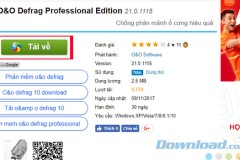March 6, 2023
- Preliminary results of large-scale real-world data study of Medicare patients conclude that use of intravascular imaging (IVI) during percutaneous coronary intervention (PCI) procedures grew 62% between 2013 and 2019, and is associated with lower incidence of mortality, acute myocardial infarction (MI), repeat PCI, and major adverse cardiac event (MACE)
- Largest real-world Medicare analysis of Cardiac Implantable Electronic Device (CIED) infection treatment in more than 1 million patients shows that early removal of infected cardiac implantable electronic devices (CIEDs), for which Philips developed the Philips Laser Sheath – GlideLight – and Philips Mechanical Rotating Dilator Sheath – TightRail, substantially improves healthcare utilization and reduces hospital costs
- Multi-center, prospective, observational study demonstrates the safety and procedural efficiency of Philips Intracardiac Echocardiography (ICE) Catheter – VeriSight Pro 3D ICE
Amsterdam, the Netherlands – Royal Philips (NYSE: PHG, AEX: PHIA), a global leader in health technology, today announced the presentation of various clinical study results at this year’s Annual Scientific Session & Expo of the American College of Cardiology/World Congress of Cardiology event (ACC.23/WCC, March 4 – 6, New Orleans, USA) that confirm Philips’ commitment to clinically validating its innovations in cardiac and cardiovascular care.
- Initial results from a high-quality real-world evidence study of Medicare data (inpatient and outpatient, 2013-2019) by Dr. Eric Secemsky, Director of Vascular Intervention at Beth Israel Deaconess Medical Center (BIDMC, Boston, MA, USA), that analyzed over a million patients to evaluate trends in the use of, and outcomes associated with, intravascular imaging (IVI) during percutaneous coronary intervention (PCI) procedures were presented by Dr. Reza Fazel, Interventional Cardiologist at BIDMC.
- Dr. Sean Pokorney, Assistant Professor of Medicine and Member of the Duke Clinical Research Institute at Duke University School of Medicine (Durham, NC, USA), presented the results of a study that quantified the improved healthcare utilization and reduced hospital costs associated with early removal of infected cardiac implantable electronic devices (CIEDs).
- A presentation by Dr. Mohamad Alkhouli, Professor of Medicine at Mayo Clinic School of Medicine (Rochester, MN, USA) detailed the results of a study that demonstrated the real-world safety and performance of Philips Intracardiac Echocardiography Catheter – VeriSight Pro 3D ICE – during a range of image-guided minimally-invasive cardiac procedures.
“To make a real difference to patients, it is vitally important that medical innovations are validated in real-life clinical practice so that clinician decision-making and guideline setting are firmly evidence-based. At Philips, we are deeply committed to making sure this is the case,” said Dr. Atul Gupta, Chief Medical Officer for Image-Guided Therapy at Philips. “The positive clinical study results announced today are further evidence of how we are continuously working with our clinical partners to co-create new innovations and demonstrate how they improve outcomes for patients.”
Reduced risk of one-year mortality when intravascular imaging used during PCI procedures
Dr. Eric Secemsky at Beth Israel Deaconess Medical Center and his collaborators conducted a high-quality real-world evidence study of Medicare data for over one million patients undergoing PCI procedures between January 1, 2013, and December 31, 2019. The preliminary results, which were presented at ACC.23/WCC by Dr. Reza Fazel, reveal that the use of intravascular imaging (IVI) technologies as an adjunct to angiography rose by 62% during the period and is associated with superior patient outcomes. The potential for further strong growth is supported by a recent review published in the Journal of the American College of Cardiology (JACC), which “advocates broader use of these technologies as a part of contemporary practice” and recommends that “IVI capability should be included in all U.S. CCLs [cardiac catheterization laboratories]” [1]. Dr. Fazel’s presentation highlighted some of the benefits that could accrue from such a move. The retrospective real-world study showed that IVI use during PCI procedures was associated with lower rates of one-year mortality (Hazard Ratio 0.96, 95% CI 0.94-0.98)**, myocardial infarction (MI), repeat PCI procedures, and major adverse cardiac event (MACE). It is one of the first studies to include outpatient procedures, which accounted for 43.3% of all the PCIs included in the analysis.
Philips’ IVI offering comprises a range of intravascular ultrasound (IVUS) catheters, co-registration and automated measurement tools for use on Philips Image-Guided Therapy System – Azurion, designed to help cardiologists decide, guide, and confirm the right interventional treatment for each patient. The patient benefits of these tools have already been demonstrated in multiple clinical studies. The JACC review paper referred to above states that IVUS is “the more flexible of the options and is the one that can be utilized in almost all clinical scenarios” [1].
Timely removal of infected CIEDs
The CIED Infection Medicare Study* of clinical practice was conducted by Dr. Sean Pokorney and his team at the Duke Clinical Research Institute, which analyzed the records of more than one million CIED implant patients in the ‘U.S. 100% Medicare fee-for-service’ population covering the period January 1, 2006, to December 31, 2019.
The study represented a nationwide analysis of CIED infection care, and as already reported by Dr. Pokorney at last year’s ACC (ACC.22) [2], demonstrated that approximately 4 in 5 patients were not treated [2] according to ACC/AHA/HRS/EHRA Class I consensus recommendations and guidelines for CIED infection, which recommend full system extraction ideally within 3 days [3,4]. Of the 9,867 patients diagnosed with a CIED infection 12 months or more after implantation, only 13.3% underwent extraction within six days and only 5.2% between seven and 30 days.
“This data highlights a major gap in care among our CIED infection patients, which results in higher mortality, more health care utilization, and higher cost of care. Quality improvement interventions with focused systems of care are needed to optimize patient outcomes,” commented Dr. Pokorney.
Dr. Pokorney’s presentation at ACC.23/WCC highlighted the cumulative incidence of all-cause hospitalization and the associated healthcare expenditure for these patients during a period of one year after infection diagnosis. Complete device extraction within six days of CIED infection diagnosis was associated with lower all-cause hospitalization in follow-up (21% lower) and lower healthcare expenditure (42% lower) compared with patients who did not undergo extraction [5]. Timely extraction was also associated with lower hospitalization rates. The patient group for which no device extraction within 30 days of diagnosis took place was characterized by a 68% hospitalization rate compared to a 54% hospitalization rate for the group in which patients underwent CEID extraction within six days of diagnosis. Additionally, hospital expenditures in the year following a CIED infection were almost cut in half, with costs being USD 63,259 for the group with no extraction within 30 days, reducing to USD 36,815 for extraction within six days.
Dr. John Andriulli added: “CIED infection is a healthcare crisis and EMR (electronic medical records) are essential in identifying patients and minimizing time to extraction. It must be ubiquitously shared between hospital systems to improve length of stay and more importantly to impact the potential reduction in mortality. This is especially true for outside hospital transfers. This is when the EMR becomes even more important.”
Performance and safety of 3D intracardiac echocardiography
The prospective, non-randomized, multi-center, observational study*** into the safety and performance of Philips 3D Intracardiac Echocardiography Catheter (ICE) – VeriSight Pro – was led by Dr. Mohamad Alkhouli at Mayo Clinic School of Medicine. The study was based on a cohort of 155 patients evaluated for a range of percutaneous cardiac intervention procedures, including left atrial appendage occlusion (LAAO), cardiac ablation, heart valve replacement, and patent foramen ovale (PFO) as well as atrial septal defect (ASD) ‘hole-in-the-heart’ repair procedures.
Compared to TEE, which involves passing an ultrasound transducer deep into the patient’s esophagus, an ICE catheter has a tip-mounted ultrasound transducer that can be routed to the heart via the patient’s blood vessels and a small incision in the skin. For the majority of patients, ICE is considerably more comfortable than TEE and requires less sedation or anesthesia, improving patient safety and experience and reducing the number of operating room staff required during a procedure.
During the study, patients were followed until discharge or 48 hours after their procedure, with safety demonstrated by the fact that no periprocedural device-related adverse events were reported. Philips VeriSight Pro 3D ICE demonstrated acceptable or better image quality compared to TEE or competitive ICE technology in over 95% of the procedures. VeriSight Pro 3D ICE was considered to be an acceptable or better surrogate to TEE 89.7% of the time.
All three clinical studies are part of more than 110 ongoing clinical studies that support Philips image-guided therapy solutions with clinical evidence. For ten consecutive years, Philips has been recognized as a top innovator in the Clarivate Top 100 Global Innovator list.
For more information on innovation at Philips, click here.
*Supported by a research grant from Philips. Philips had no role in the design of the study or conduct of the analysis.
**In the Secemsky study, the Hazard Ratio of 0.96 implies that patients undergoing PCI using angiography and IVI imaging during PCI have a 4% lower risk of dying during the following year than patients undergoing PCI using angiography alone.
***Philips sponsored and developed the Philips Intracardiac Echocardiograhy (ICE) Clinical Registry, NCT 04950192
[1] Truesdell A, Alasnag M, Kaul P, et al. Intravascular Imaging During Percutaneous Coronary Intervention. J Am Coll Cardiol. 2023 Feb, 81 (6) 590–605.
[2] Pokorney SD. Low Rates Of Guideline Directed Care Associated With Higher Mortality In Patients With Infections Of Pacemakers And Implantable Cardioverter Defibrillators. American College of Cardiology (ACC) Late Breaking Clinical Trials. Washington, DC, USA April 2022 [presentation].
[3] Kusumoto et al. 2017 HRS Expert Consensus Statement on Cardiovascular Implantable Electronic Device Lead Management and Extraction. Heart Rhythm, 2017.
[4] Blomström-Lundqvist, C., et al. (2020, Jun 1). European Heart Rhythm Association (EHRA) international consensus document on how to prevent, diagnose, and treat cardiac implantable electronic device infections -endorsed by HRS, APHRS, LAHRS, ISCVID, ESCMID in collaboration with EACTS. Eur Heart J, 41(21), 2012-2032.
[5] Pokorney SD. Healthcare utilization and healthcare expenditures in patients with infections of pacemaker and implantable cardioverter defibrillators. American College of Cardiology (ACC) Scientific Sessions. New Orleans, USA March 2023 [presentation].
For further information, please contact:
Joost Maltha
Philips Global Press Office
Tel: +31 6 10 55 8116
Email: joost.maltha@philips.com
About Royal Philips
Royal Philips (NYSE: PHG, AEX: PHIA) is a leading health technology company focused on improving people's health and well-being through meaningful innovation. Philips’ patient- and people-centric innovation leverages advanced technology and deep clinical and consumer insights to deliver personal health solutions for consumers and professional health solutions for healthcare providers and their patients in the hospital and the home. Headquartered in the Netherlands, the company is a leader in diagnostic imaging, ultrasound, image-guided therapy, monitoring and enterprise informatics, as well as in personal health. Philips generated 2022 sales of EUR 17.8 billion and employs approximately 77,000 employees with sales and services in more than 100 countries. News about Philips can be found at www.philips.com/newscenter.
Attachments
- Philips Intracardiac Echocardiography Catheter – VeriSight Pro
- Intravascular ultrasound (IVUS) catheter
- CIED infection

















